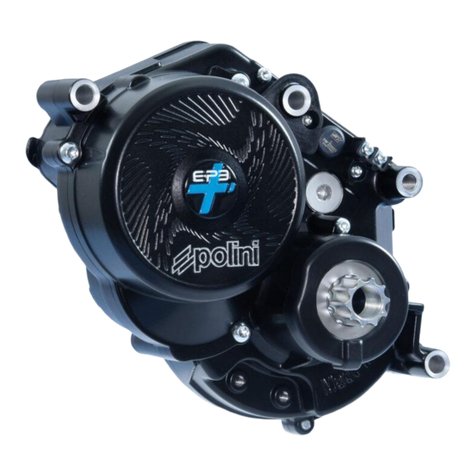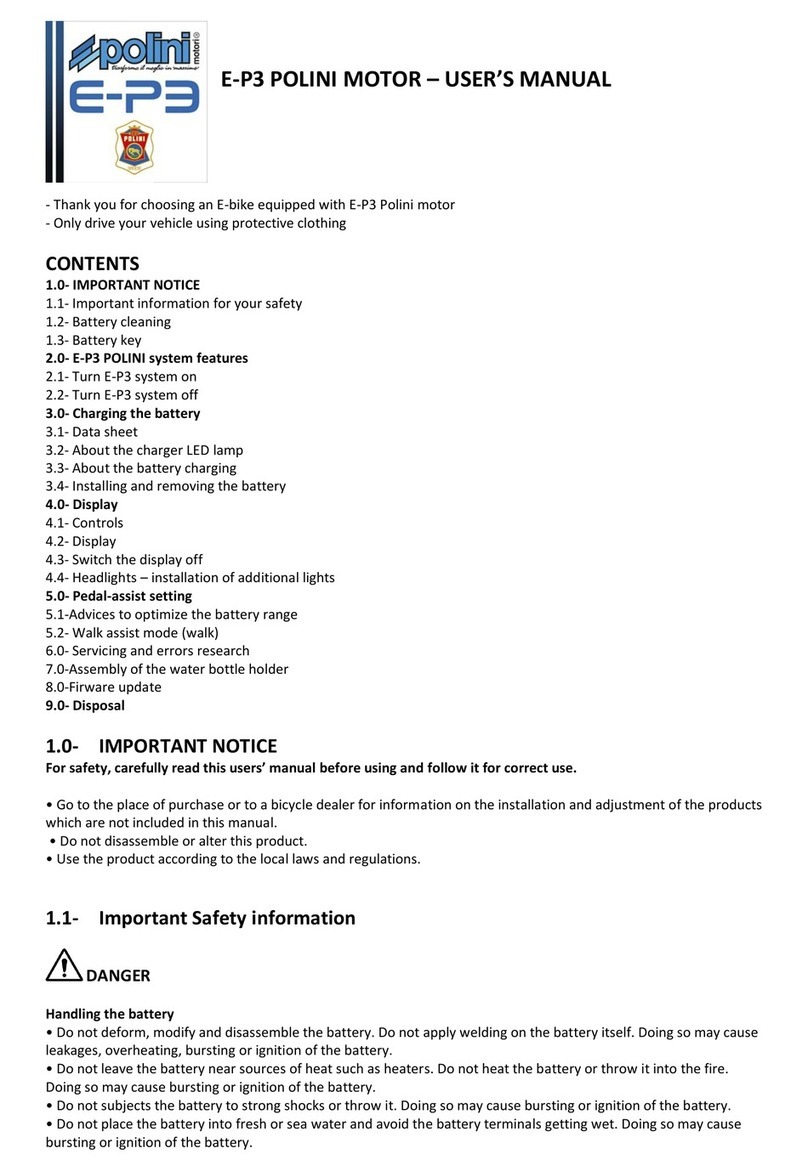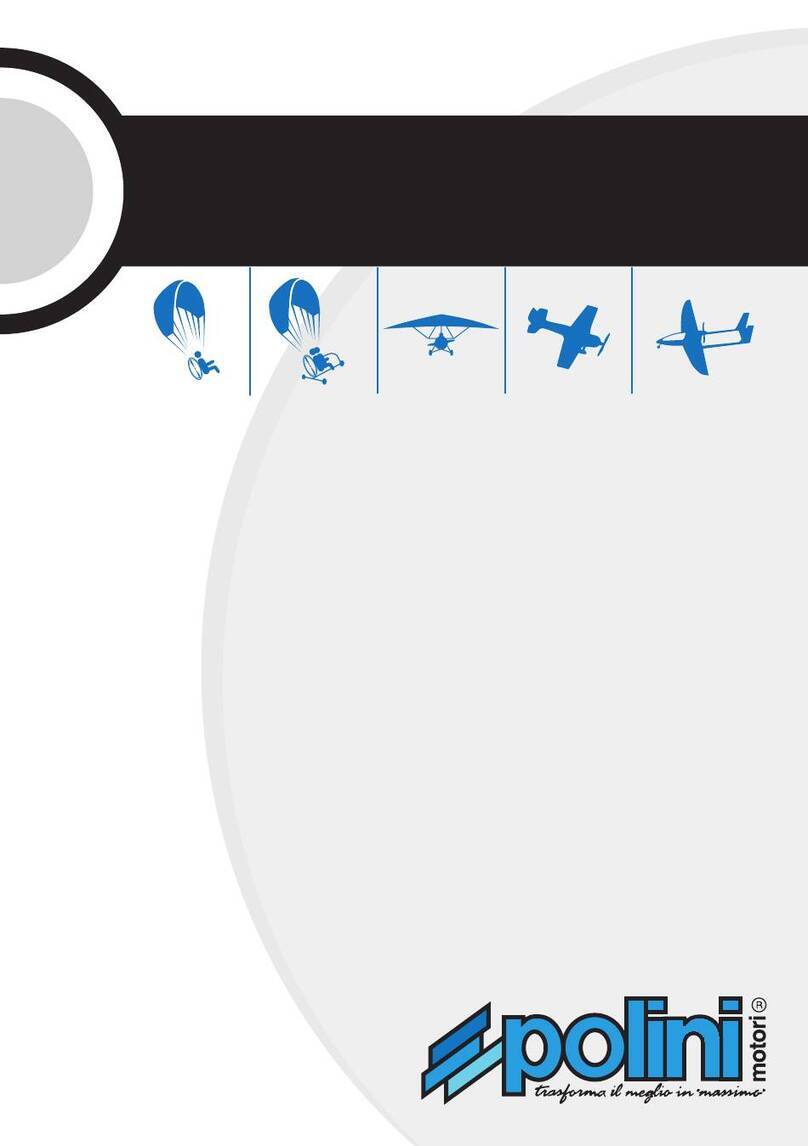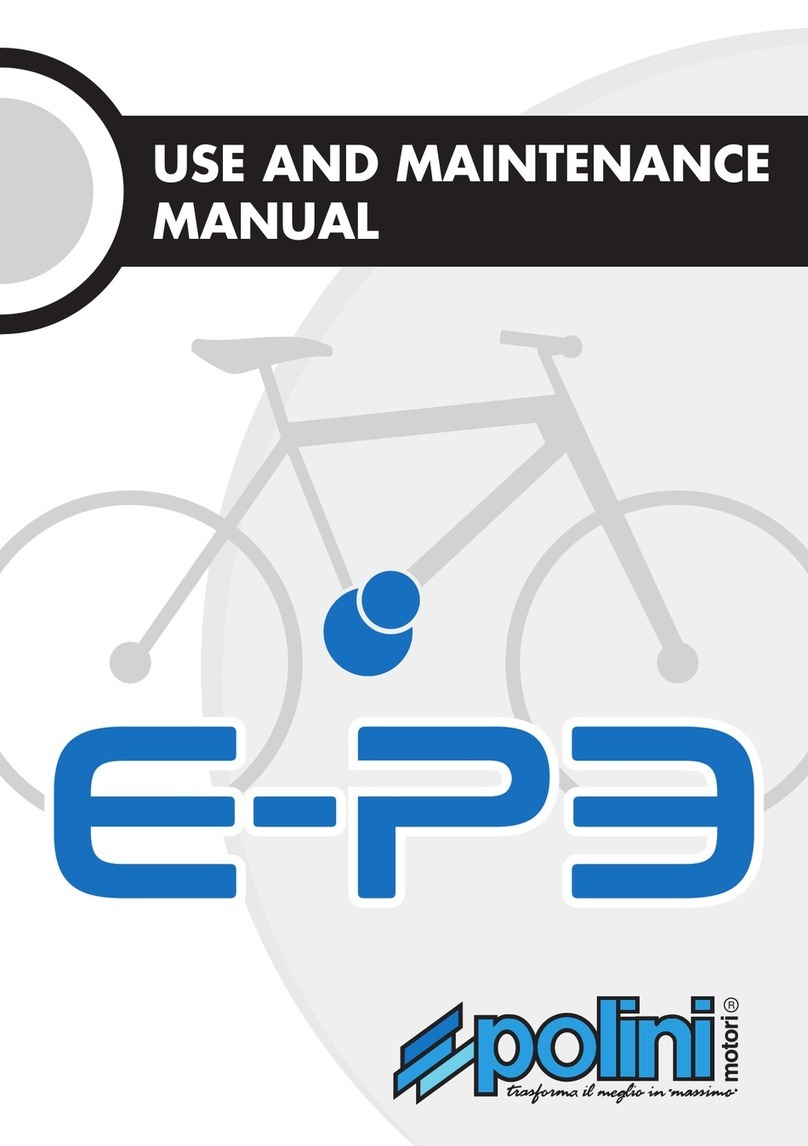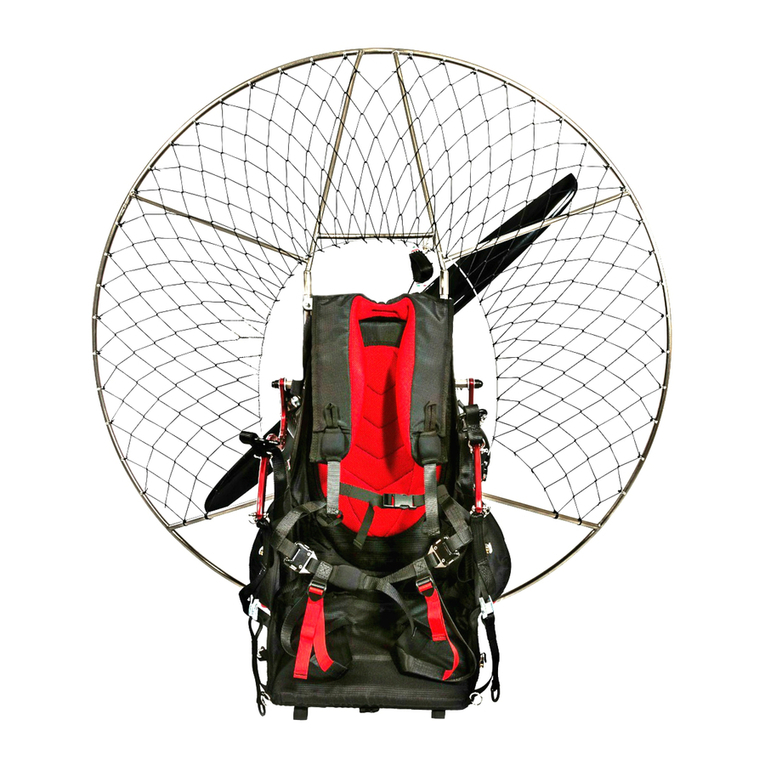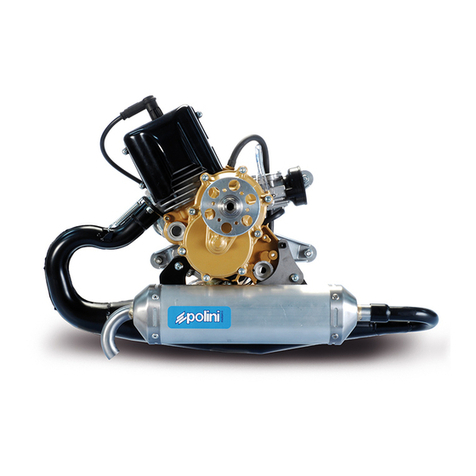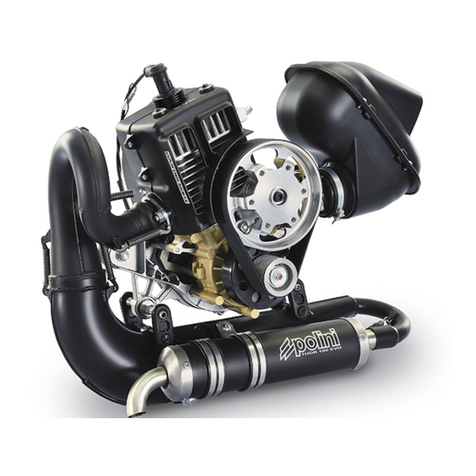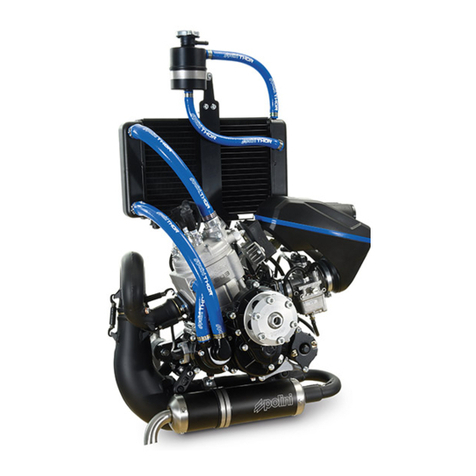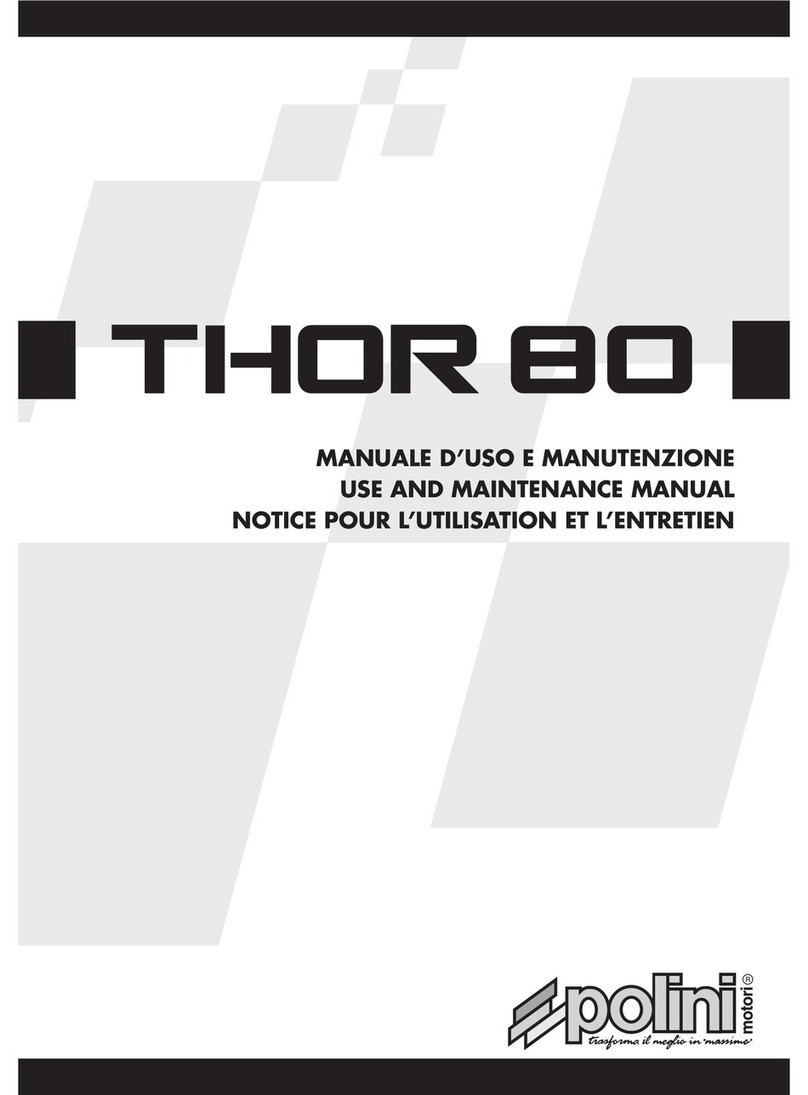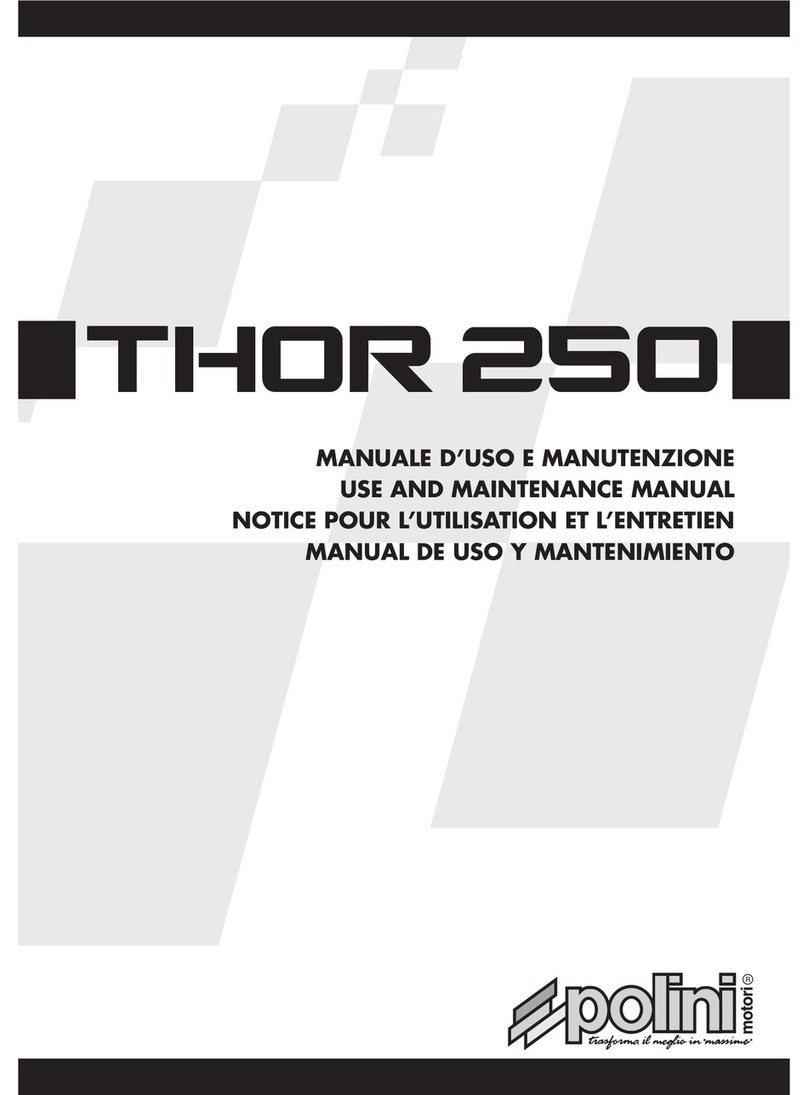
2
ITALIANO
da soggetti non autorizzati dalla Polini;
- utilizzo del motore per competizioni.
- utilizzo del motore senza elica.
Adempimenti da parte dell’utente finale
Ogni reclamo dovrà essere effettuato consegnando il prodotto da ispe-
zionare ad un concessionario Polini autorizzato. L’acquirente dovrà
fornire la copia della “prova di acquisto” in originale o del tagliando
di garanzia regolarmente vidimato dalla Polini o dal distributore. Per
conservare la validità della garanzia il cliente deve effettuare le manu-
tenzioni periodiche previste dal manuale di uso e manutenzione.
Limitazioni di responsabilità
Conformemente a quanto stipulato nella presente garanzia, gli obblighi
della Polini saranno limitati alla riparazione del componente difettoso o,
a discrezione, alla sostituzione di uno o più componenti, secondo quanto
sarà ritenuto necessario per porre rimedio ad ogni malfunzionamento
dovuto ai difetti di materiale o di manodopera coperti dalla garanzia.
Alcuna responsabilità può essere imputata alla Polini o al distributore
del motore per ogni problema o danno recato a persone/cose/anima-
li riscontrato durante tutta la vita del motore. Ricordiamo che questo
prodotto non è certificato e che in qualsiasi momento può rompersi o
smettere di funzionare. Pertanto non sono coperti né da garanzia né da
risarcimento i danni causati:
- a persone/animali/cose causati dall’utilizzo generico del motore.
- a persone/animali/cose causati da una collisione con l’elica o una
qualsiasi parte staccatasi dal motore.
- al telaio, componenti del velivolo e/o all’elica causati dalla collisione
con una qualsiasi parte proveniente dal motore.
- spese di recupero, di spedizione, telefoniche o di noleggio di qualsiasi
tipo, inconvenienti o perdite di tempo, o altri danni indiretti.
! PERICOLO! Questo motore, non certificato, può spegnersi di colpo.
L’interruzione del motore può provocare atterraggi di fortuna che pos-
sono produrre ferite o portare alla morte. Il velivolo spinto da questo
motore dovrebbe volare soltanto negli spazi aperti e negli orari di luce.
L’acquirente si assume tutto il rischio per l’uso ed è consapevole che
durante il suo utilizzo questo motore si potrebbe spegnere di colpo.
Questo prodotto non è coperto da responsabilità civile prodotti. Chi vola
con questo motore o semplicemente lo accende si assume tutti i rischi
inerenti lo sport del volo a motore ed ogni responsabilità per danni a
cose e a persone, o decesso causato dall’uso di questo prodotto. In consi-
derazione di ciò, non sono coperti da garanzia i danni causati dall’instal-
lazione del motore su apparecchi che richiedono motori certificati. /su
apparecchi ai quali non è idoneo/ su apparecchi che richiedono diverso
tipo di motore. L’odierno venditore pertanto non risponderà di danni
causati all’utilizzatore od a terzi.
2- CARBURANTE
Il Thor è un motore a 2 tempi che necessita di una miscela di benzina
e olio. Utilizzare solo benzina verde (E5) acquistata al distributore con
un numero minimo di ottani pari a 95. Addizionare la benzina con olio
100% sintetico di buona qualità al 2,5%. Non conservare a lungo la
benzina in contenitori perché subisce un deterioramento della qualità.
Utilizzare contenitori metallici certificati per il trasporto carburanti.
Mi-
scelare la benzina con l’olio solo al momento dell’utilizzo.
! AVVERTENZA: il tipo di incrostazioni carboniose depositate sulla
testa, sulla candela e sullo scarico del cilindro sono informazioni che
indicano il tipo di miscelazione del vostro motore. Si rammenta che una
combustione troppo ricca d’olio non allunga la durata del motore.
! ATTENZIONE! la benzina è estremamente infiammabile ed
esplosiva. Eseguire queste operazioni in un luogo ben ventilato e a mo-
tore spento. Non fumare, non provocare scintille o fiamme nell’area in
cui la benzina viene conservata e dove avviene il rifornimento.
! ATTENZIONE! Solo per i clienti Americani. Il numero di ottani
Europeo non equivale a quello Americano:
es. EU (E5) 95 OTTANI = US 91 OTTANI / EU 98 OTTANI = US 93 OCTANE
Per i motori Thor usare una benzina con un alto numero di ottani (non
meno di US 91) max 5% etanolo.
! ATTENZIONE! è importante l’utilizzo di 100 LL AVGAS nel caso di
irreperibilità del carburante sopra consigliato
3- MESSA IN MOTO
Avviare il motore solo dopo essersi accertati che sia tutto in ordine e
perfettamente funzionante, che non ci siano persone, cose o animali
nei dintorni Verificare inoltre il corretto serraggio della bulloneria e
controllare l’impianto di alimentazione.
3.1- Carburatore dell’Orto
Riempire il circuito carburante, fare arrivare la benzina fino al foro di
ingresso del carburatore e successivamente pompare per circa tre volte
(utilizzando la pompa manuale Polini cod. 316.0106) per riempire la
vaschetta. Per avviare il motore tirare verso l’alto la leva starter (foto
1) posizionata nella parte superiore del corpo carburatore. Azionare
l’avviatore senza accelerare fino a che il motore non parte. Una volta
acceso, spegnere il motore e disinserire lo starter abbassandolo e riav-
viando il motore accelerando lievemente se necessario.
01
! ATTENZIONE! Durante tutte le fasi tenere sempre in mano l’in-
terruttore di spegnimento e tenersi pronti ad azionarlo in qualsiasi caso
di anomalia. Nel qual caso tenerlo premuto fino a completo spegnimen-
to del motore. Una volta avviato il motore consigliamo di fare un test di
corretto funzionamento del pulsante di spegnimento. Dopo il controllo
riavviare il motore senza accelerare e senza l’utilizzo dello starter. A
questo punto lasciar girare al minimo il motore dando delle leggere
accelerate fino a portare il motore in temperatura.
